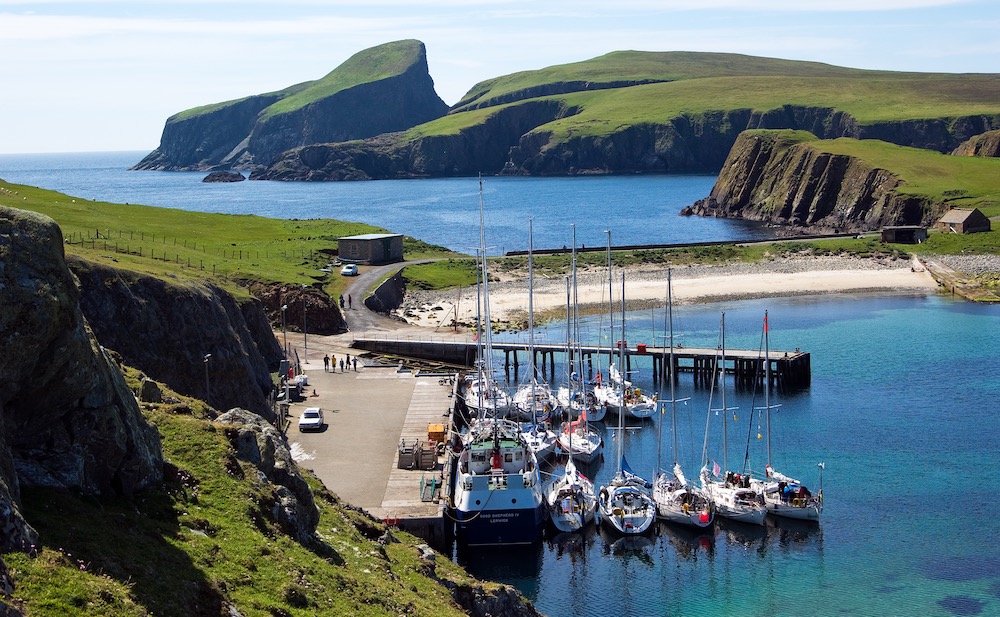|
Fair Isle is the most geographically remote inhabited island in the United Kingdom. It lies 24 miles from the Shetland Mainland and 27 miles from North Ronaldsay, the most northerly of the Orkney islands. It is administratively part of Shetland.
There is a permanent population of around 60 people here, who mostly live at the south end of the island. Traditionally, crofting and fishing were the main occupations, but today the economy is far more diverse. |
Zoom out to see where we are in the world.
|
Nevertheless, agriculture remains an extremely important part of island life, and some of the most significant moments in the Fair Isle calendar revolve around croft work, such as lambing, clipping and baling silage. If they're keen, visitors sometimes get the chance to be involved in this work, helping to round up and clip sheep in the summer.

